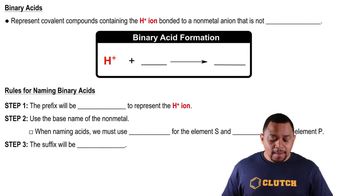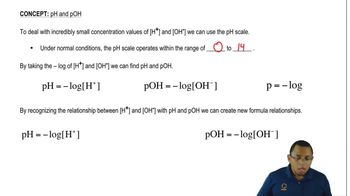Textbook Question
Write the formula for the conjugate acid for each of the following bases:
c. H2PO4-
1154
views
 Verified step by step guidance
Verified step by step guidance Verified video answer for a similar problem:
Verified video answer for a similar problem:



 0:40m
0:40mMaster Acid-Base Introduction Concept 1 with a bite sized video explanation from Jules
Start learning